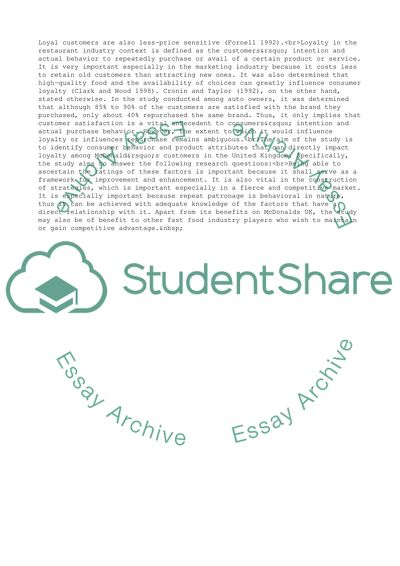Cite this document
(The Satisfaction on Food and Service in McDonald's Essay, n.d.)
The Satisfaction on Food and Service in McDonald's Essay. Retrieved from https://studentshare.org/business/1736929-research-proposal-for-final-year-project-consumer-behaviour-plus-customer-loyalty-in-the-uk-mcdonalds
The Satisfaction on Food and Service in McDonald's Essay. Retrieved from https://studentshare.org/business/1736929-research-proposal-for-final-year-project-consumer-behaviour-plus-customer-loyalty-in-the-uk-mcdonalds
(The Satisfaction on Food and Service in McDonald'S Essay)
The Satisfaction on Food and Service in McDonald'S Essay. https://studentshare.org/business/1736929-research-proposal-for-final-year-project-consumer-behaviour-plus-customer-loyalty-in-the-uk-mcdonalds.
The Satisfaction on Food and Service in McDonald'S Essay. https://studentshare.org/business/1736929-research-proposal-for-final-year-project-consumer-behaviour-plus-customer-loyalty-in-the-uk-mcdonalds.
“The Satisfaction on Food and Service in McDonald'S Essay”, n.d. https://studentshare.org/business/1736929-research-proposal-for-final-year-project-consumer-behaviour-plus-customer-loyalty-in-the-uk-mcdonalds.


